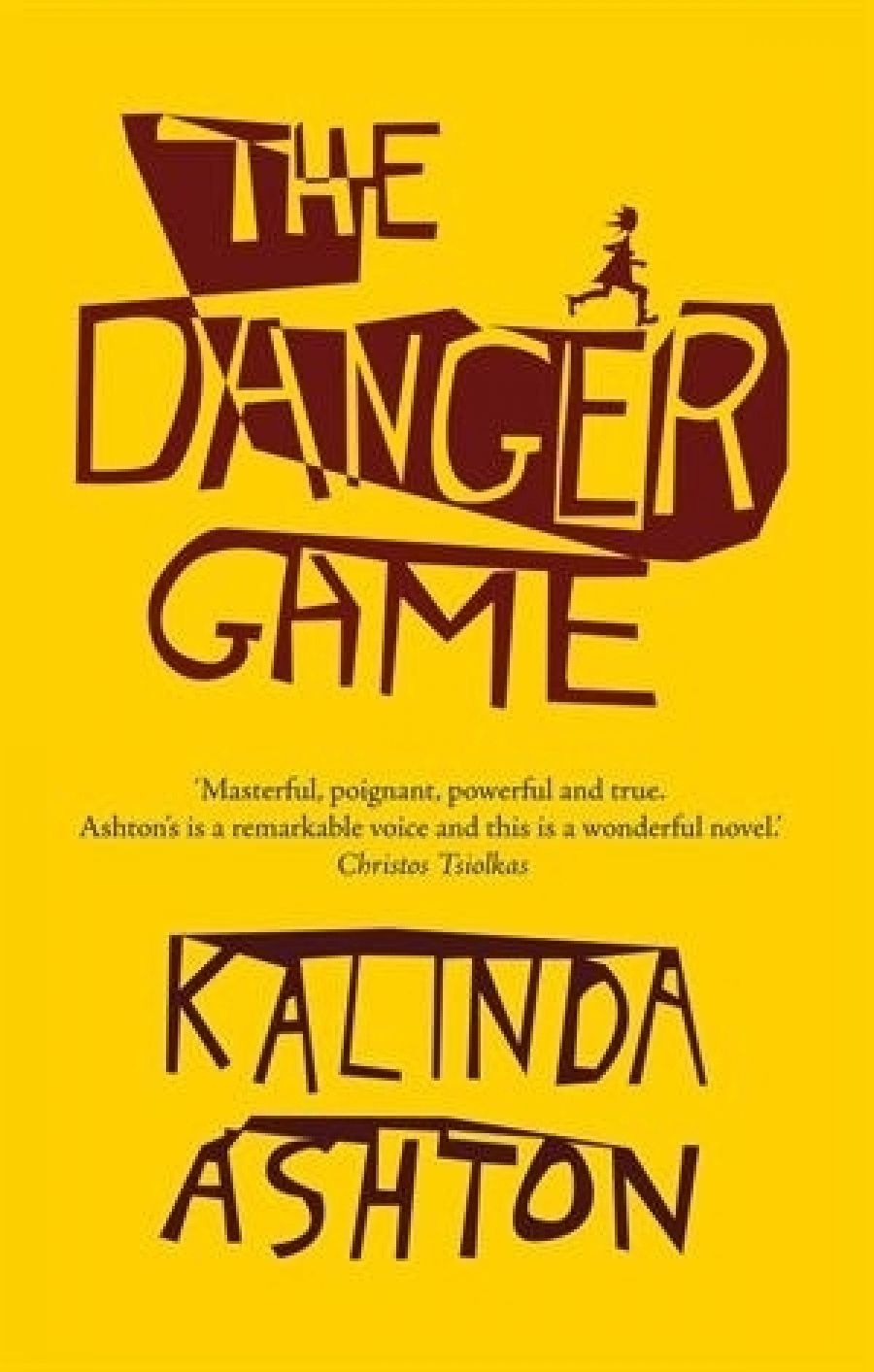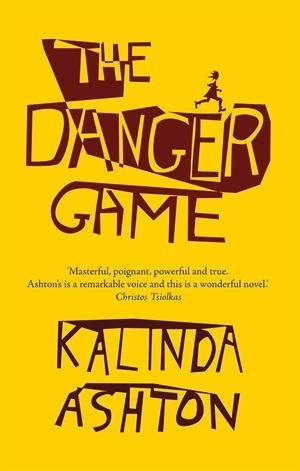
- Free Article: No
- Contents Category: Fiction
- Review Article: Yes
- Article Title: Hop. Jump. Kerb.
- Online Only: No
- Custom Highlight Text:
If you believe the hyperbole surrounding her novel – Christos Tsiolkas has pronounced it ‘masterful, poignant, powerful and true’ – Kalinda Ashton is, at thirty-one, her generation’s answer to Helen Garner: a novelist of everyday Melbourne who makes sad, daily truths pleasurable to read because her writing is so easy to consume.
- Book 1 Title: The Danger Game
- Book 1 Biblio: Sleepers Publishing, $24.95 pb, 288 pp
- Book 1 Cover Small (400 x 600):

Chapters are divided among three siblings. Alice’s chapters are told in the first-person, Louise’s in the second, Jeremy’s in the third. Second-person narration can risk repetition (how does one avoid constantly using ‘you’?) and often fails to draw the reader into the novel’s fiction. Ashton has set herself a technical challenge most writers would happily avoid; because she is smart, and skilled at her trade, she succeeds. It is, however, worth considering whether this is a worthwhile pursuit. Is this just showy writing, vaguely alluding to postmodern theory, or does the structure enhance its substance?
This brings me to what appears to be the novel’s main function: to engage the reader in the kind of social problems that give state politicians headaches: heroin use, state school closures, the cycle of poverty and schoolyard bullying. It sounds grim, and The Danger Game can be. That a novelist should aim to change our thinking about such issues might sound naïve, but Ashton is not. She has been a social activist on the left since her undergraduate days, and is now the associate editor of Overland. Significantly, the unionist, activist milieu within The Danger Game is not romantically or simplistically conjured. Social change, like all change within the novel, appears random at first but turns out to emerge from a greater degree of involvedness between individual and civic cause. People act from self-interest, the novel seems to say, but because of society’s interconnectedness people can recognise the greater good as their own.
More profoundly, the novel does the most political thing a novel can do: it enables the reader to understand other people’s world views, particularly those who are vilified or ignored. This is facilitated by the elaborate use of perspective, especially the dreaded second person, to animate the story of Louise, the junkie, lifelong-welfare recipient, thief, liar and all-round social problem. The device prompts the reader to imagine herself in Louise’s situation: in Ashton’s hands, a hit of heroin comes to seem the only logical solution to life’s problems.
The Danger Game is littered with the kind of characters and behaviour that self-aware, confident, educated middle-class types tend to deride, but Ashton repeatedly pulls the rabbit out of the hat, investing the obnoxious child, the alcoholic father and the emotionally withdrawn woman with what we all have, no matter how disguised it is: reason.
As with Tsiolkas’s novel Loaded (1995), and Shadowboxing (2006), by Tony Birch (another endorser), The Danger Game’s settings – commission housing, the classrooms of ‘failed’ state schools, disused tips, unroadworthy cars – are far from glamorous. Like those writers, Ashton manages to avoid reducing people to their environments (humour, pleasure, joy still exist there), while illuminating economic deprivation and social exclusion. ‘Like the others who lived here,’ Ashton writes of an aging man in commission housing, ‘he would have become used to all the tiny calculations that made life possible: using teabags twice; checking your change; doing the divisions for the meal, the day, the week.’
Ashton’s writing is reminiscent of Tsiolkas’s in another way. Her depiction of drug-taking is exceptional. Notoriously difficult territory for an artist, perhaps because such experiences take place mainly within the non-linguistic realm of the body, when represented badly, such episodes create a barrier between the audience and storyteller. Louise’s ice rush is exhilarating writing: ‘you start running … step, skip. Hop. Jump. Kerb. Horns blast. Back into the blackness. Jogging. Leap the puddles of water, outpace the boys hovering on the corner with a joint. The world’s beginning and ending.’ The sex scenes are similarly effective.
Perhaps the most powerful impression is created by the ten-year-old Jeremy’s final chapters. Bullied at school and at home, fearful and desperate to please, from a hiding-spot Jeremy observes his dad’s ‘trembling fingers’. Just as Ashton’s continual perspectival shifts allow the reader to see matters differently throughout The Danger Game, Jeremy’s world is enlarged by his new vantage point.
This is not the kind of writing you expect to find in a début novel: artful, wise, confident and determined to make a difference, not just be decorative.


Comments powered by CComment